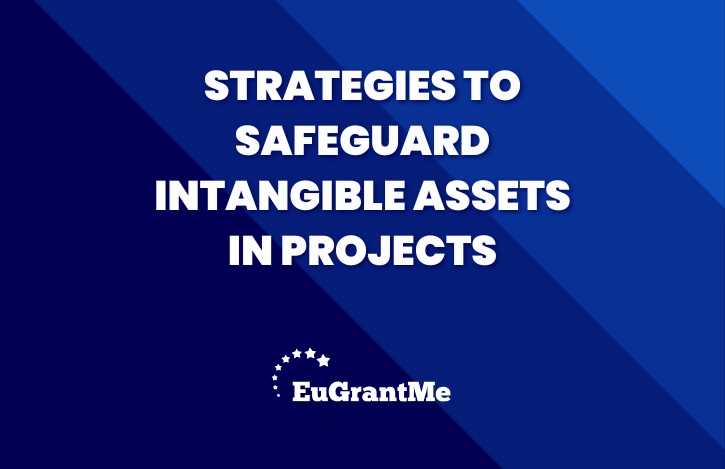Intangible assets play a crucial role in business success. Intellectual property, proprietary data, and brand reputation contribute to long-term value. However, these assets are vulnerable to misappropriation, loss, or unauthorised use. To safeguard intangible assets, organisations must implement strategic protection measures. Legal frameworks, security protocols, and contractual safeguards ensure that valuable knowledge remains secure.
Understanding Intangible Assets
Intangible assets include intellectual property, trade secrets, databases, and goodwill. Unlike physical assets, they lack a tangible presence but hold significant value. Their protection is essential for maintaining a competitive edge. Without adequate safeguards, businesses risk financial loss and reputational damage.
Proper identification of intangible assets helps organisations determine the best protection strategies. Patents, copyrights, and trademarks offer legal recognition, while confidentiality agreements and cybersecurity measures enhance security.
Intellectual Property Protection
Intellectual property (IP) forms the foundation of innovation. Patents protect inventions, while copyrights secure creative works. Trademarks safeguard brand identity, preventing unauthorised use. Failing to protect IP exposes organisations to legal disputes and financial setbacks.
A proactive approach to IP protection includes registering patents, monitoring market activity, and enforcing rights. Legal action against infringement ensures that businesses retain control over their creations. Strengthening internal policies also helps prevent unauthorised sharing of proprietary knowledge.
Cybersecurity Measures
Digital transformation increases the risk of cyber threats. Hackers target proprietary information, compromising trade secrets and customer data. A robust cybersecurity strategy helps safeguard intangible assets against breaches and unauthorised access.
Encryption, firewalls, and secure networks protect sensitive information. Employee training reduces the risk of phishing attacks and data leaks. Regular security audits identify vulnerabilities, ensuring that systems remain resilient against evolving threats.
Contractual Safeguards
Strong contractual agreements define ownership rights and responsibilities. Non-disclosure agreements (NDAs) prevent employees and partners from sharing confidential information. Licensing agreements outline permitted use of intellectual property, reducing the risk of unauthorised exploitation.
Legal teams play a key role in drafting contracts that protect business interests. Regular contract reviews ensure compliance with changing regulations. Well-defined agreements prevent disputes and strengthen asset protection strategies.
Employee Awareness and Training
Employees handle critical information daily. Without proper training, they may unintentionally compromise asset security. Awareness programmes educate staff on best practices for handling proprietary data and intellectual property.
Clear policies on data access and usage minimise internal risks. Restricting access to confidential files ensures that only authorised personnel can handle sensitive information. Encouraging a culture of responsibility enhances overall asset protection.
Risk Management Strategies
Identifying potential threats helps organisations develop risk mitigation plans. Risk assessments highlight vulnerabilities in asset protection frameworks. Proactive measures, such as insurance policies and compliance checks, provide additional security layers.
Organisations must regularly review their risk management strategies. Adapting to emerging threats ensures continued protection of valuable intangible assets. Strategic planning minimises financial and operational disruptions caused by security breaches.
Leveraging Technology for Protection
Advanced technologies enhance intangible asset security. Blockchain ensures transparency in transactions, reducing the risk of data tampering. Artificial intelligence detects unusual activity, identifying potential threats in real time.
Organisations integrating technology into asset protection strategies gain a competitive advantage. Digital tools streamline compliance, monitoring, and enforcement processes. Leveraging innovation strengthens safeguards, ensuring long-term security.
Strengthening Organisational Policies
Comprehensive policies guide employees on asset protection protocols. Clear guidelines on information sharing, storage, and disposal prevent unauthorised access. Consistent enforcement of security measures ensures compliance at all organisational levels.
Regular policy updates align protection strategies with evolving threats. Engaging employees in policy development fosters a security-conscious culture. A structured approach to safeguarding intangible assets enhances resilience against risks.
Enhancing Protection for Long-Term Success
Businesses rely on intangible assets to drive innovation and growth. Failing to implement adequate safeguards exposes them to unnecessary risks. To safeguard intangible assets, organisations must adopt a multi-layered protection strategy. Legal frameworks, cybersecurity measures, and strong policies ensure asset security. Proactive planning and continuous improvement strengthen resilience, securing long-term success.
At EuGrantMe, we are passionate about fostering innovation and empowering ambitious minds to flourish. Our mission revolves around providing top-notch grant writing services for the EIC Accelerator and Horizon grants in Europe. We enable our customers to unlock the full potential of their ground-breaking ideas.
Do you have a project to turn into reality?
Contact us!


